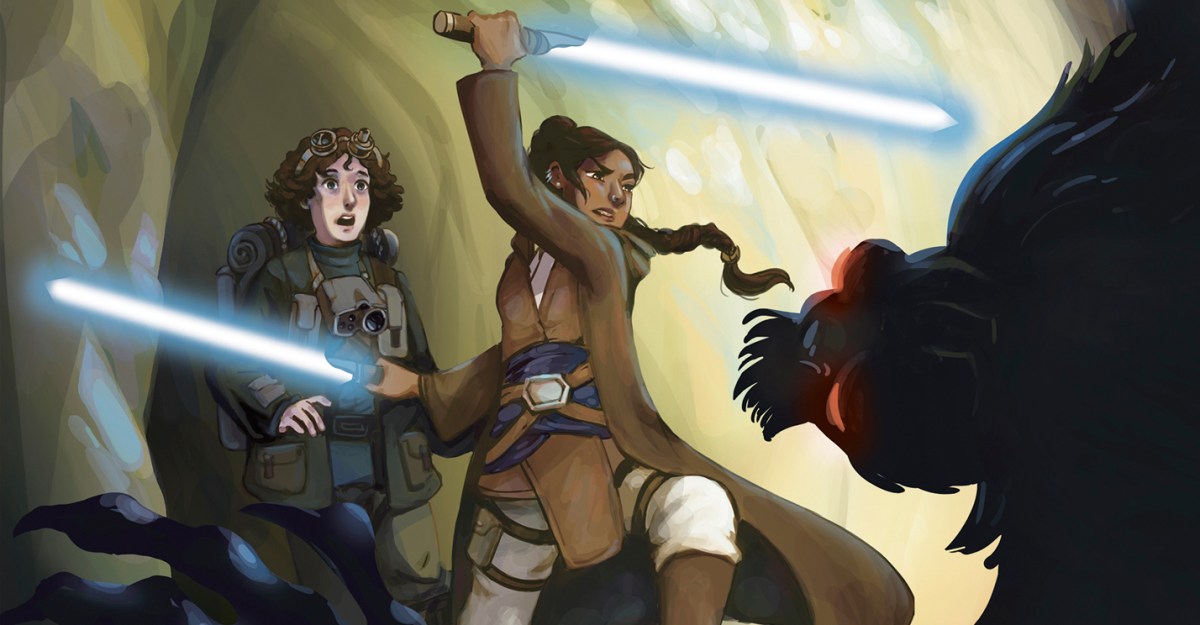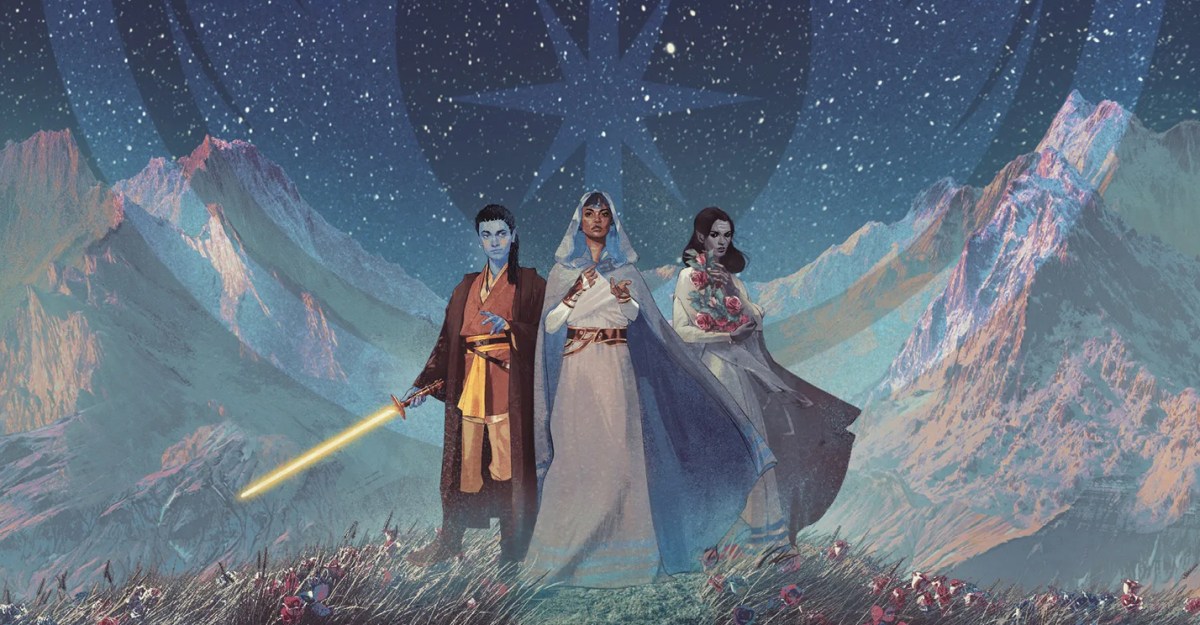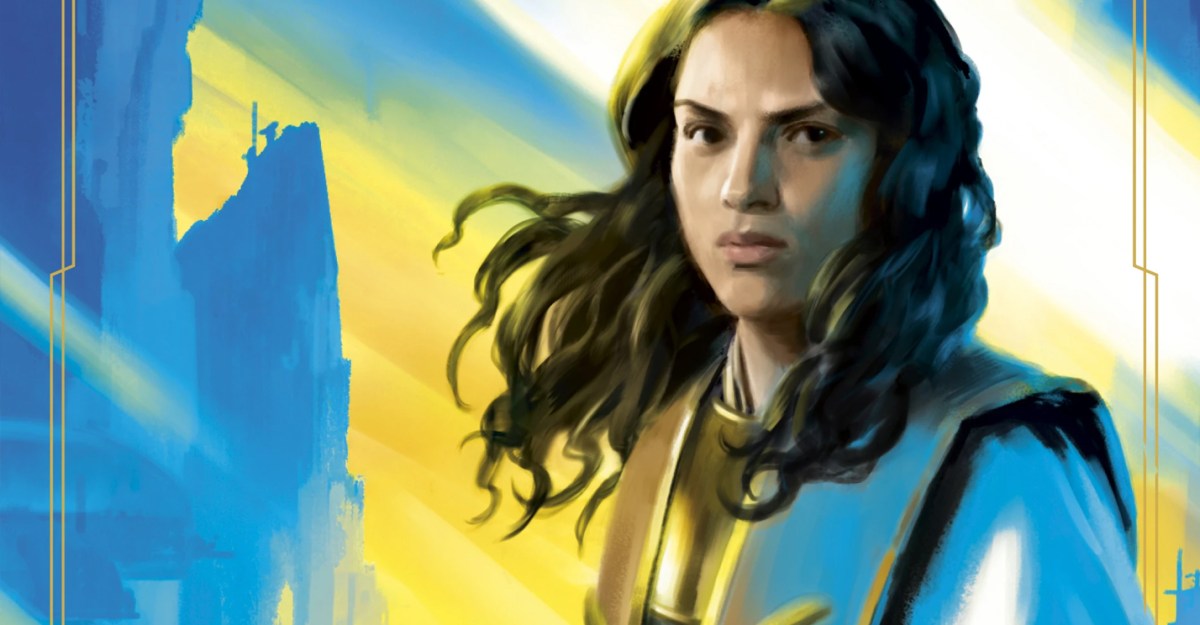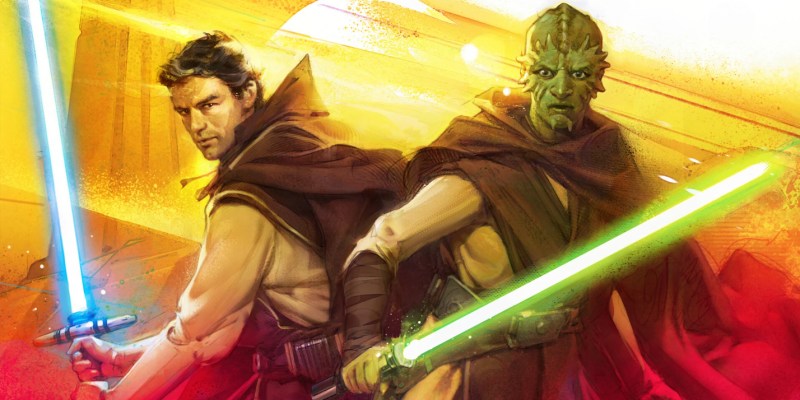This review contains early story spoilers for audio drama Star Wars: The Battle of Jedha and some general spoilers for The High Republic Phase II.
Phase II of The High Republic comes together in Star Wars: The Battle of Jedha, an audio drama from comics writer and Sunday Times bestselling novelist George Mann. An ensemble cast of characters and fast-paced action make The Battle of Jedha an enjoyable story in review and a must-listen experience that weaves all the different characters and stories from Phase II together.
The High Republic is set hundreds of years before the events of the Skywalker Saga, featuring the Jedi at a time when the Sith were dormant. While Phase I was set 232 years before the Battle of Yavin and focused on the conflict with the Nihil, Phase II goes another 150 years back to witness the birth of the anarchistic terrorist group. After separate storylines in the first three books of the latest phase, The Battle of Jedha brings many key characters together in a story that begins to reveal the connections between them.
Following the events of Convergence in 382 BBY, The Battle of Jedha features the two planets of Eiram and E’ronoh sending representatives to the ancient world of Jedha to sign a peace treaty that will formally end the Forever War and create a lasting peace. Master Creighton Sun and Jedi Knight Aida Forte arrive on Jedha to help oversee the peace conference, attended by Ambassadors Tintac from E’ronoh and Cerox from Eiram. Respected mediator Morton San Tekka presides over the proceedings. Meanwhile, Silandra Sho from Quest for the Hidden City and Keth Cerapath, a low-ranking worker from the Church of the Force, join the cast.
The best part of The Battle of Jedha is how it connects story threads from Path of Deceit, Quest for the Hidden City, The High Republic comics, and Convergence. For that reason, it’s best to be caught up when you listen to Star Wars: The Battle of Jedha, but it’s worth the effort to get the fantastic story that has been told until now.

Like in the rest of Phase II, the story examines war and the costs of being unable to find common ground with those we see as enemies. Unfortunately, the people of Eiram and E’ronoh aren’t just at war. They’ve been trained to hate each other for generations, and the resulting lack of trust threatens the hope that a peace treaty will create a lasting peace and formally end the Forever War.
From the beginning of the peace talks, threats of violence hang over the participants. The first attempt at the ceremony is disrupted by a devastating bomb that kills many of the attendees, including Morton San Tekka. It’s up to the Jedi and Keth Cerapath to unravel a plot and stop tensions from escalating too far for peace to be saved.
As we’ve seen in The High Republic comics, Jedha isn’t always wholly welcoming to the Jedi. The worn streets of the sacred moon are filled with countless beings who worship the Force differently and are suspicious of the Jedi’s involvement in the peace talks. As Jedha prepares to host the peace talks, this environment is ideal for elements who want to stop the peace treaty from happening.
At the center of that turmoil is the Path of the Open Hand, a Force cult that believes the Jedi harm the Force through their manipulation of it. The Mother, whose name is Elecia Zeveron, is a mysterious figure who acts as a prophet for the members of the Path of the Open Hand. At the same time, she organized the theft of valuable Dark Side artifacts during Path of Deceit, fueled the Forever War between Eiram and E’ronoh in Convergence, and now seeks to destroy the peace in The Battle of Jedha.
If you liked Chancellor Palpatine’s arc in the Star Wars prequel trilogy, you’d like the Mother in The High Republic. She performs a calculated act to her followers and the public and appears well-intentioned. However, her true intentions often surface when in the presence of her closest associates. She is cold, calculated, and craves power. To get it, she will use and manipulate anyone she thinks will help her achieve her goals.

The Mother is pulling the strings much of the time, and the Path of the Open Hand is stirring the pot of distrust on the worn streets of Jedha. However, the real antagonist in The Battle of Jedha is hate — the aforementioned hate and fear that exists between the Eiram and E’ronoh and makes them easy to manipulate.
I loved that the resentment in Convergence didn’t just end when Xiri and Phan-Tu married to unite the two worlds in peace and end the Forever War. So many average citizens felt betrayed by that rather than inspired and could not accept peace and coexistence when war and hatred were all they had ever known. The conspiracy to disrupt the peace reminded me of many characters’ sentiments in Star Trek VI: The Undiscovered Country.
This is one of the better Star Wars audio dramas out there, so without spoiling anything — the story’s highlight is figuring out who is involved in the conspiracy. Some things are as they seem, but as you listen, you’ll find that others aren’t.
The Jedi in Star Wars: The Battle of Jedha converge on the ancient world after having different stories in the other High Republic books thus far. In that sense, The Battle of Jedha is an “Avengers” ensemble story at the end of Phase II, Wave 1. Attacks on the peace conference threaten to engulf the entire world in violence, and the Jedi must battle against both conspirators and Jedha’s many factions along the way.

When Star Wars is at its best, its characters undertake meaningful journeys where they overcome internal and external villains. The High Republic has excelled in featuring relatable characters with depth and conflict, which stays true in The Battle of Jedha. My favorite character throughout the story is Keth Cerapath, an ordinary citizen who finds the adventure he’s been seeking alongside Silandra Sho.
Keth works in the Church of the Force and has always wanted his life to amount to more than it did. He finds himself caught up in the story’s events and embarks on an adventure filled with heroism, courage, and friendship. Keth stars in the scene that makes The Battle of Jedha most impactful, as he demonstrates extreme bravery to help his friend Silandra. She tells him she admires him for acting to preserve the peace conference, and he replies, “No, I just didn’t want to let them hurt my friend.”
That exchange highlights what makes much of The High Republic so great. It focuses on the actual effects of war on ordinary people and doesn’t pretend that every person in the galaxy has grand motives. Most people fight to protect their loved ones, and Keth symbolizes the bravery that people can show when those they care about are threatened.
Star Wars: The Battle of Jedha is a grand adventure, moving along quickly with explosive action that creates compelling story possibilities in Wave 2 of Phase II. If Star Wars and audio dramas are your types of things, you won’t regret checking out The Battle of Jedha.
